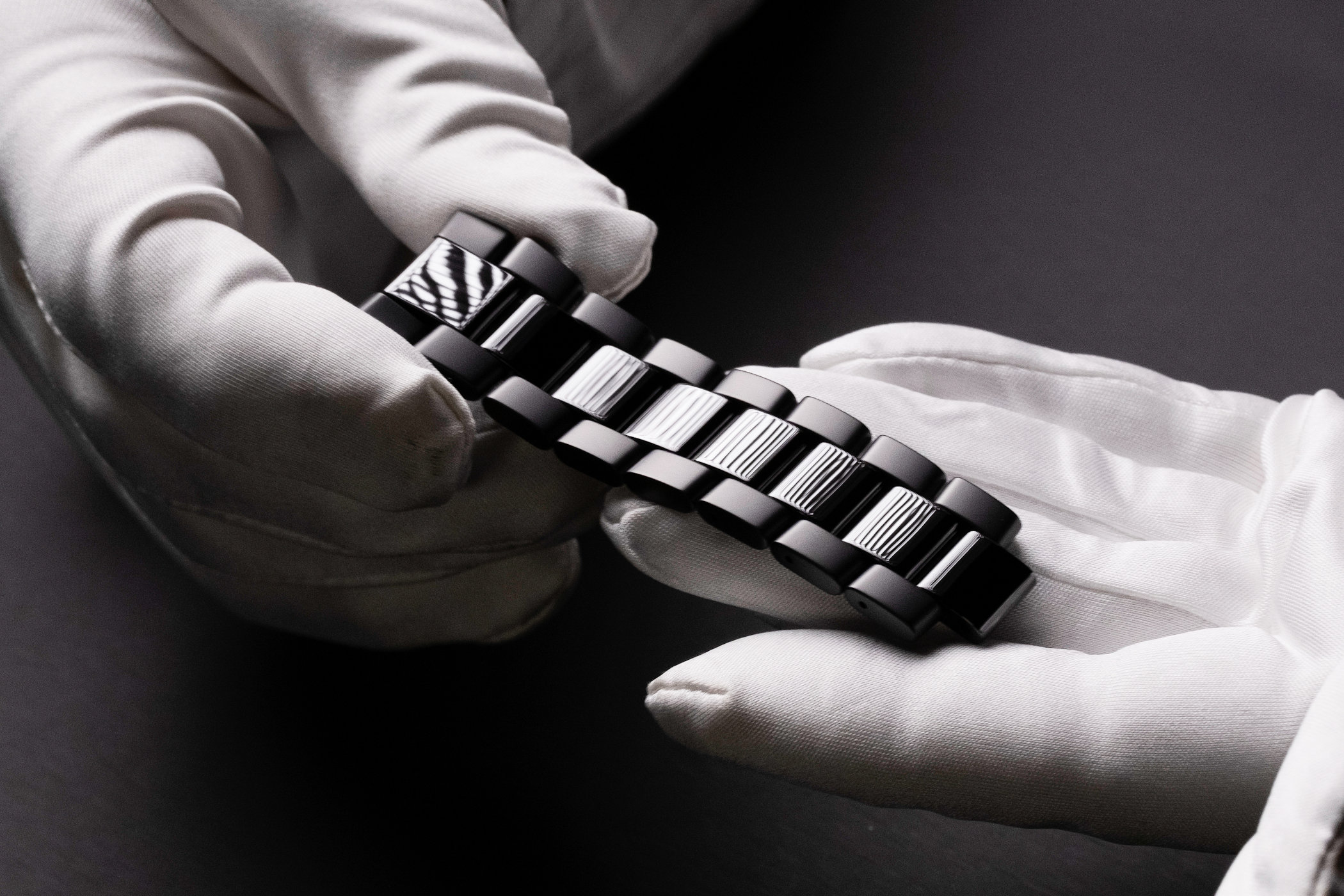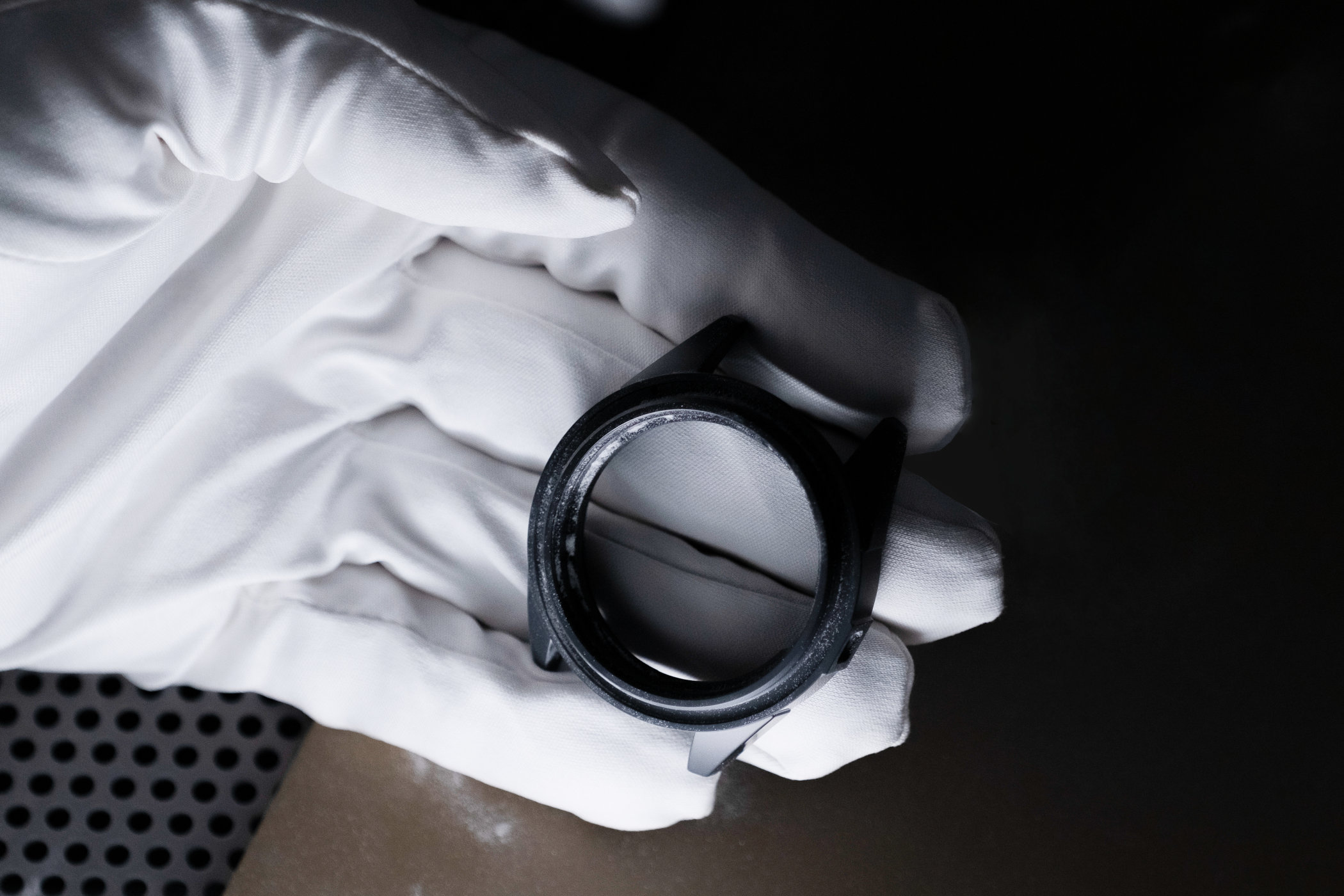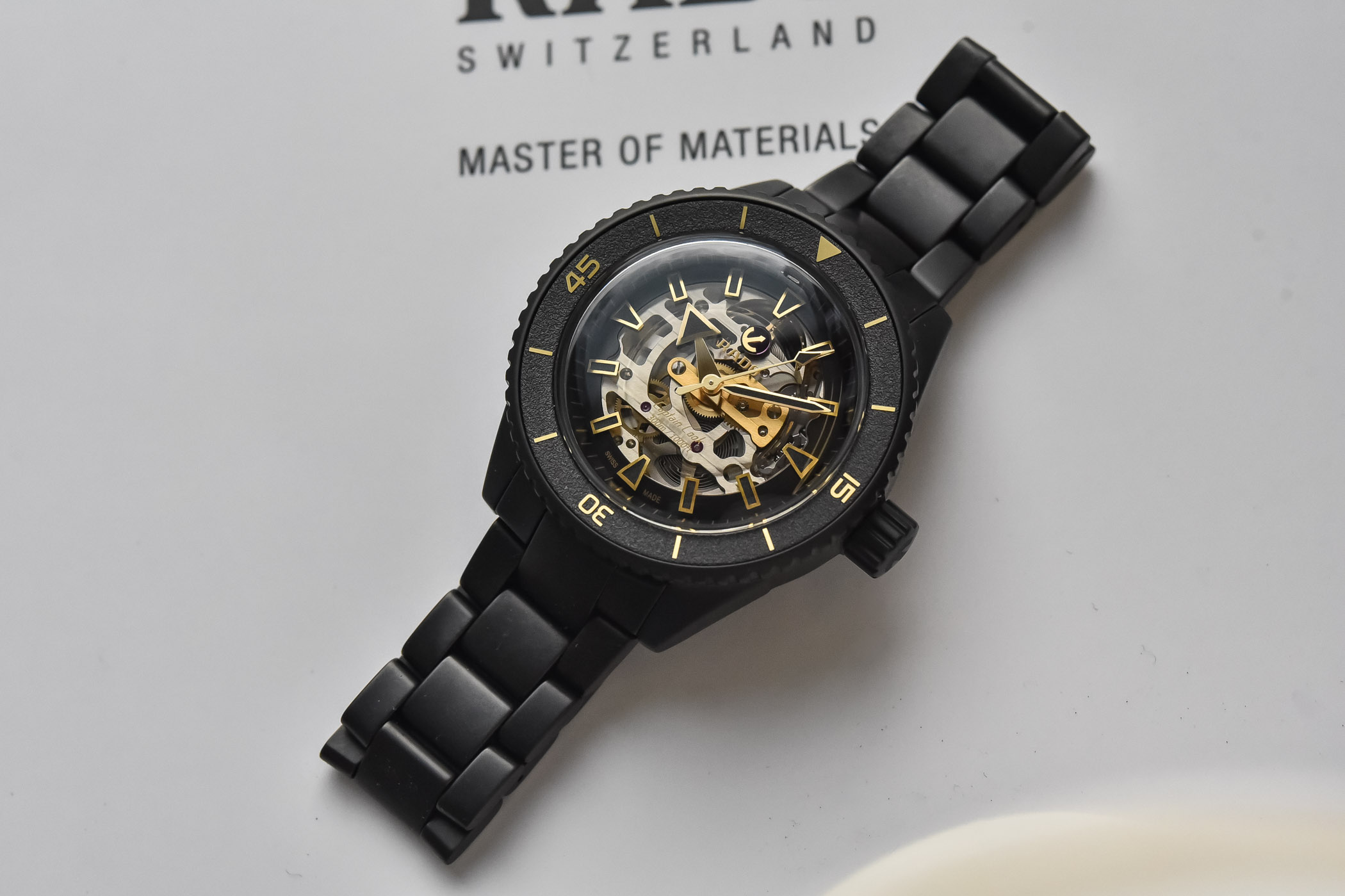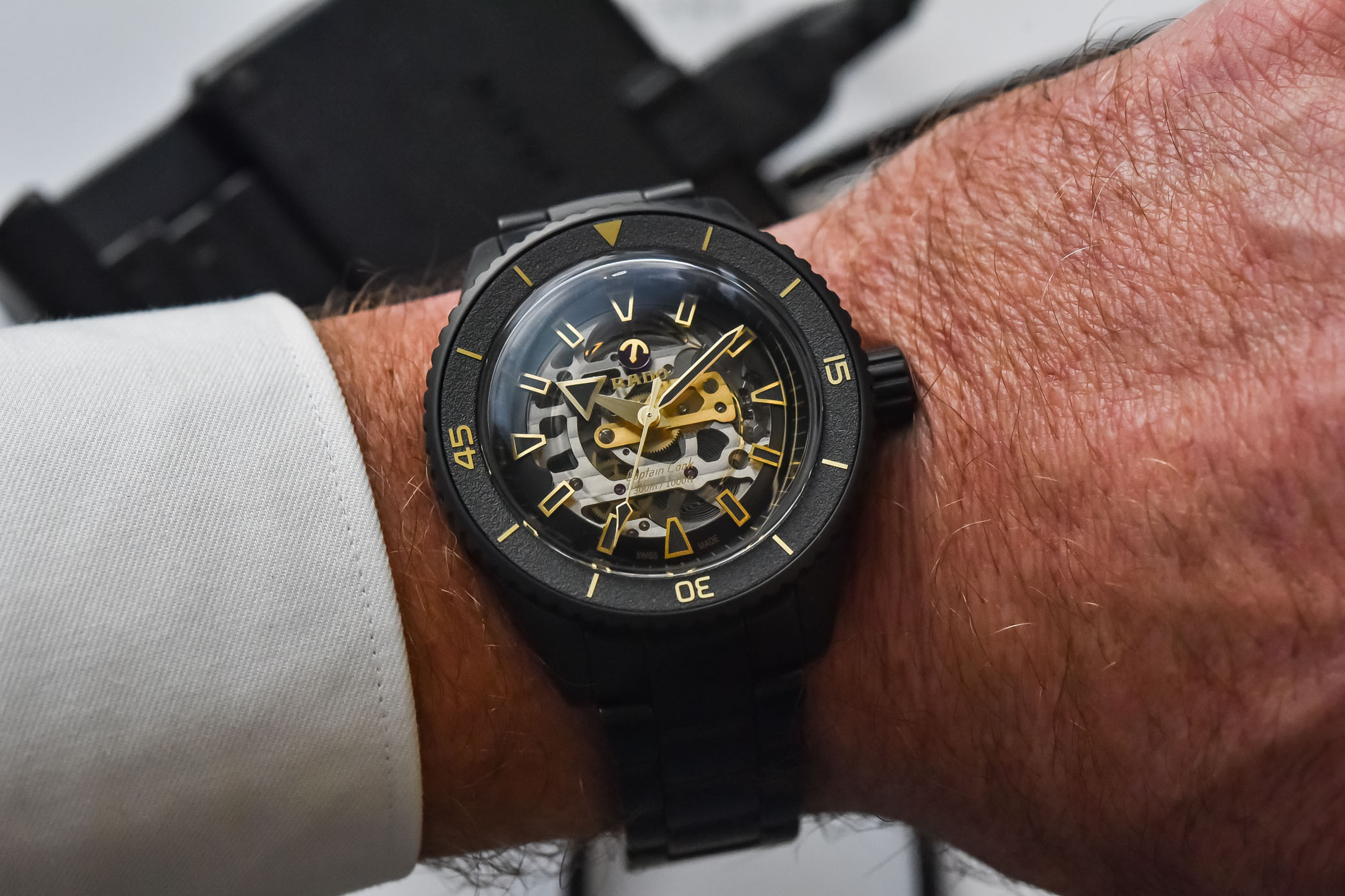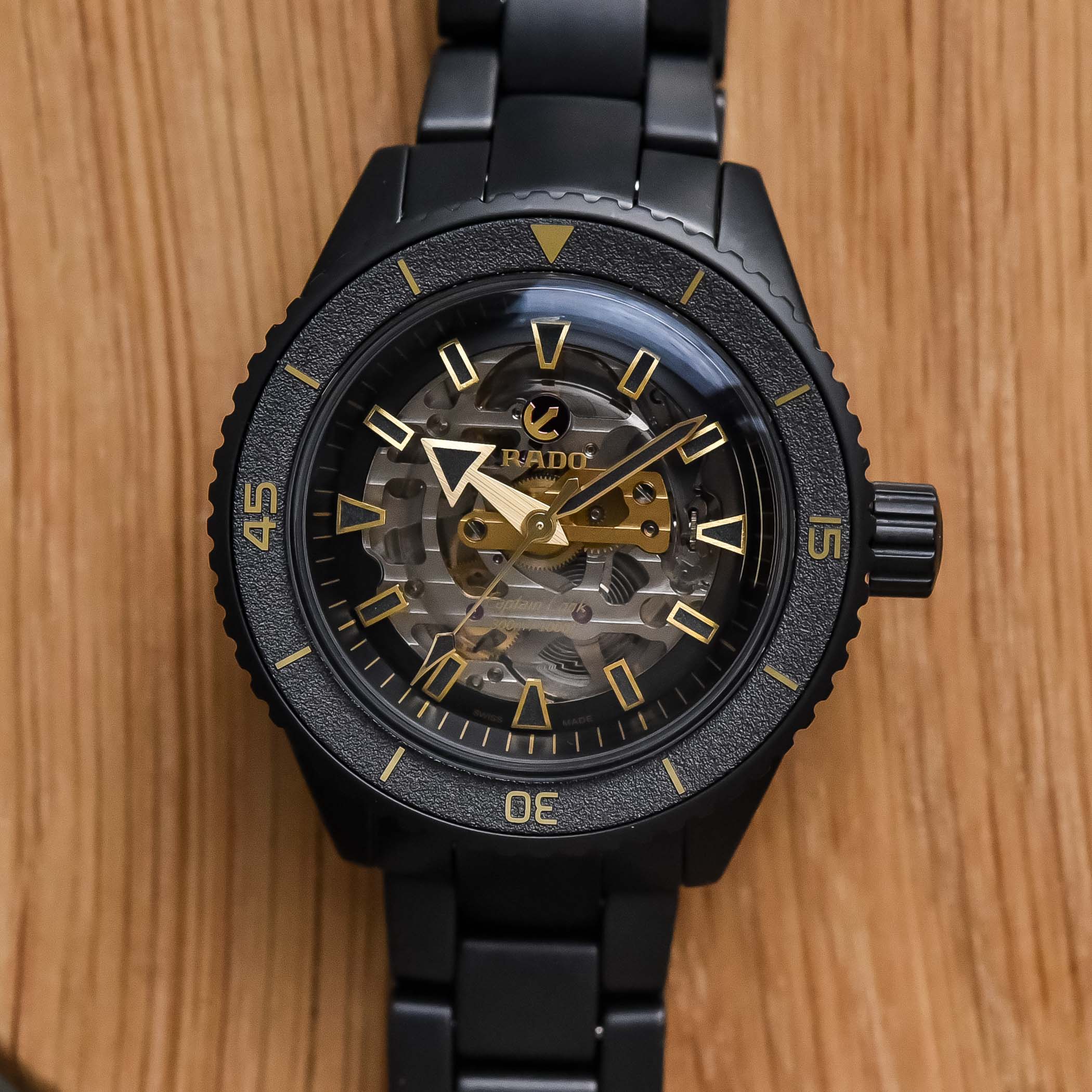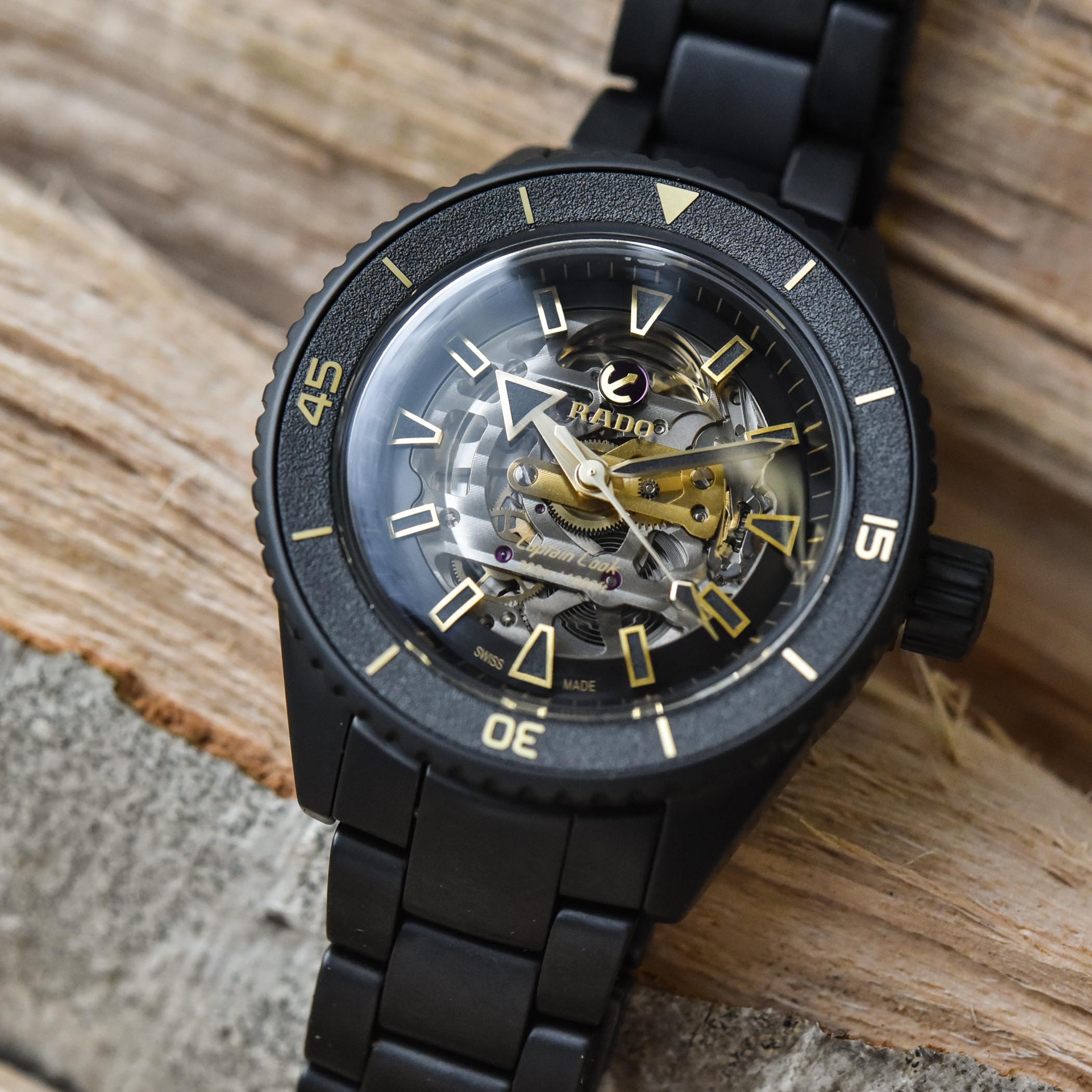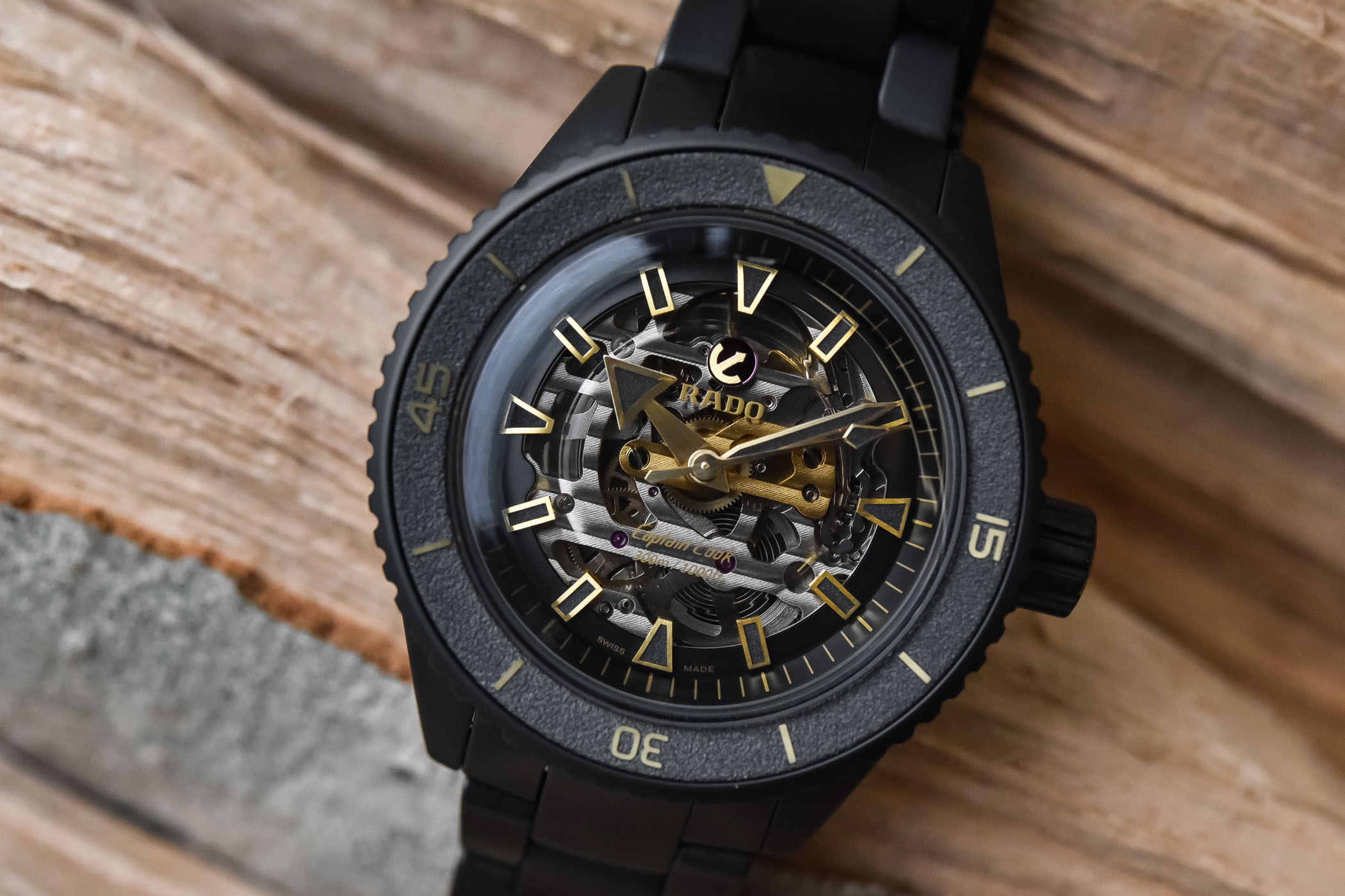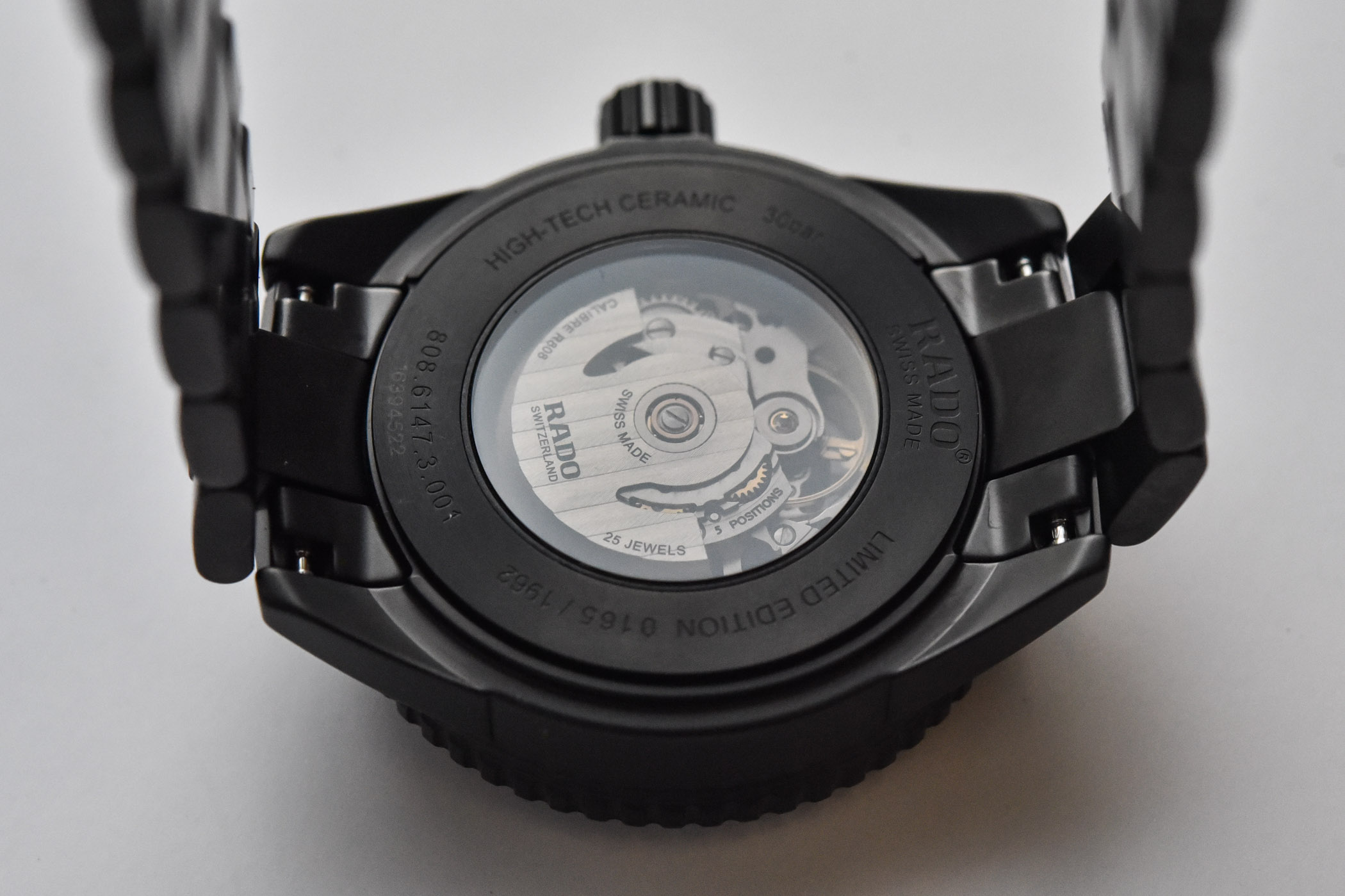The Rado Captain Cook High-Tech Ceramic Limited Edition
The Rado Captain Cook sails in with a matte black ceramic hull and bracelet and a new automatic movement exposed dial-side with elegant golden accents.
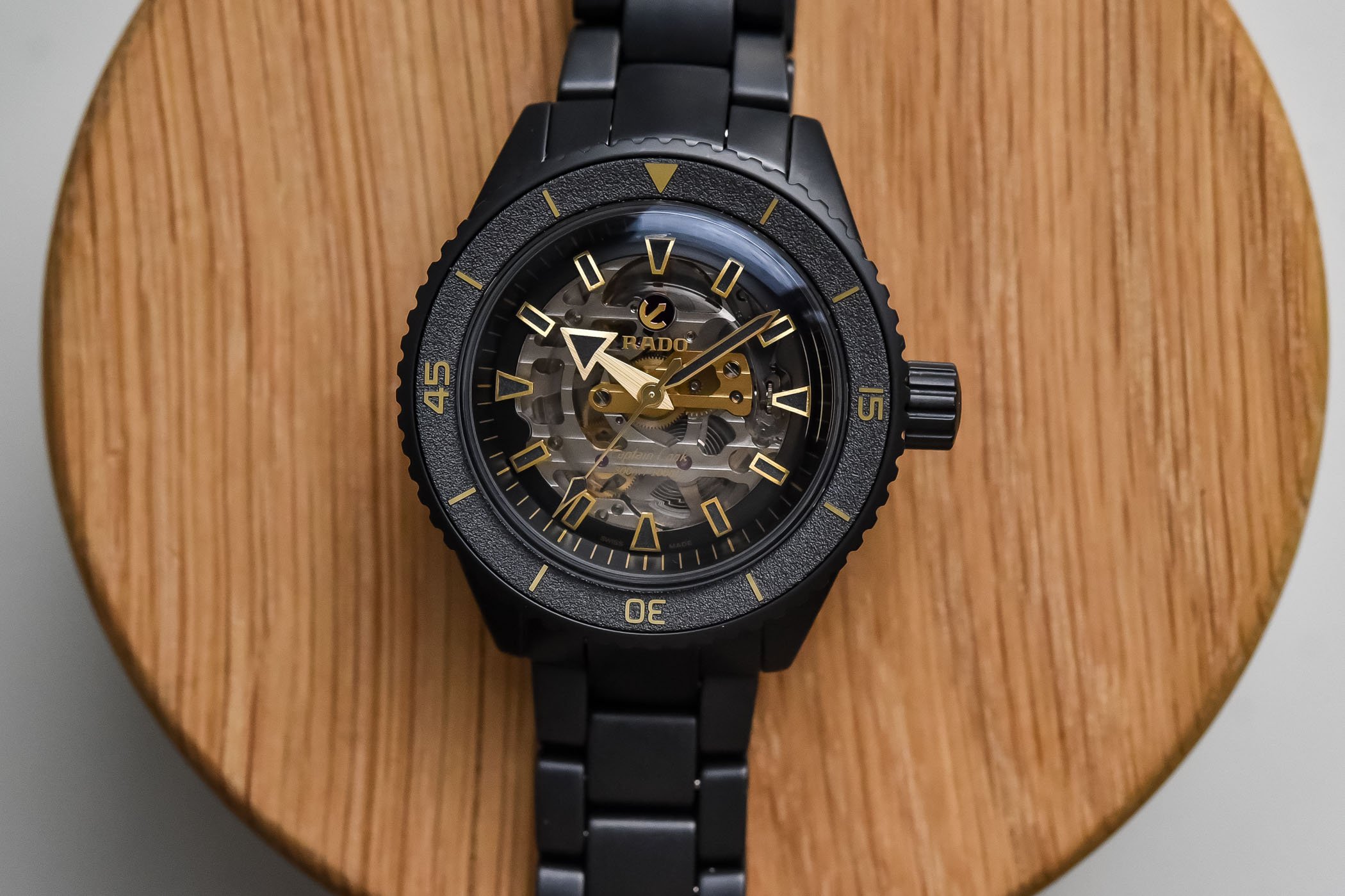
Fusing two of the brand’s fortes – a popular vintage dive watch design and innovative high-tech ceramic – Rado has come up with a winner. The latest edition of the Captain Cook flaunts a sleek matte black ceramic case, and for the first time, even the bezel and crown are crafted in ceramic. The watch is also equipped with a new movement with an airy openworked design that can be seen from the dial, complete with a new golden train bridge. Limited to 1,962 pieces in honour of the year the Captain Cook made its maiden voyage, this ‘noir’ take of the diver is a contemporary, stylish proposal.
Material Matters
Founded by the Schlup brothers and known initially as Schlup & Co, the company started as a movement manufacturer based in Lengnau, Switzerland, to become one of the largest producers of watch movements by the mid-1940s. The name Rado didn’t appear on a watch until 1957 with the Golden Horse, but the brand’s reputation as a severe materials innovator kicked off with the Diastar of 1962, the world’s first scratchproof watch made from ultra-resilient hard metal. Following the launch of the ceramic Integral model of 1986 and the iconic Ceramica with its sleek integrated silhouette in 1990, sleek contemporary design and the use of ceramic soon became bywords for Rado. Touted as the ‘Master of Materials’, don’t miss Robin’s in-depth coverage of Rado’s pioneering role in the development of high-tech ceramic.
captain cook
Another milestone in the company’s development was the introduction of the Captain Cook, also in 1962. This 220m water-resistant dive watch with a rotating 60-min bezel and a magnifying lens over the date was geared for “doctors, engineers, athletes, deep sea divers, racing car drivers”. By no means an innovator in the dive watch segment – by 1962, dive watches were already circulating with brands like Omega, Rolex, Blancpain, Seiko, et al. – the 37mm Captain Cook came with a unique feature: the pivoting anchor at noon was used to indicate when the watch needed to be serviced.
Although the Captain Cook drifted off the map in 1968 and only 8,000 watches were ever produced, it was revived in 2017 with a 37mm vintage replica known as the Hyperchrome Captain Cook, along with a more contemporary 45mm titanium version. However, the model that got closest to the original is undoubtedly the 2019 Captain Cook Limited Edition, complete with a patinated dial mimicking a vintage ancestor. Bronze Captain Cook models followed in 2020, and then in 2021, Rado put two and two together to produce the Rado Cook High-Tech Plasma Ceramic watch. Yes, Rado had used its high-tech, ultra-light and colourful ceramic for the bezel of the Captain Cook, but this was the first vessel entirely made of ceramic.
The Hull
Captain Cook is a large watch, no doubt about it. With a diameter of 43mm, a height of 14.6mm and a lug-to-lug measurement of 49.8mm, the reinforced monobloc case is water-resistant to 300m. Given its formidable dimensions and ample water-resistance, two features set it apart from most dive watches, honouring its 1962 forebear: there is no luminous dot on the rotating bezel at noon, and the screw-down crown is not protected by crown guards.
The case, bracelet, crown and rotating 60-minute bezel are made of matte black high-tech scratch-resistant ceramic. One of the salient features of ceramic, compared to steel, is its smooth, almost silky texture that is extremely agreeable to the touch. As you can see in our photos, the case, bracelet and external part of the bezel display a smooth finishing, while the ceramic insert in the bezel has a granulated laser-etched surface. For contrast, the numerals, markings and inverted triangle on the bezel are in relief and highlighted in a matte metallic golden colour; closer, in my opinion, to a brassy or bronzy colour, like the trimmings on a sailing vessel.
Consolidating the dark personality of the watch, the dial is protected by a black-tinted box-shaped sapphire crystal. The combination of the domed crystal and the thickness of the case creates a deep, plunging sensation as the eye is drawn to the exposed mechanical elements on the dial. Attached to the sloping flange with yellow gold-coloured minute markers is a rim hosting the applied hour markers that curve slightly inwards. The large triangular wedges applied at 12, 3, 6 and 9 o’clock, and the thick rectangular indices have golden frames, and their interiors are generously coated with black Super-LumiNova that emits a lasting blue glow in the dark. As would expect from a dive watch, the triangle on the bezel at noon, the entire length of the minute hand and the arrow-shaped tip of the hour and seconds hands are also treated with black Super-LumiNova. If you zoom in, you can see that even the Super-LumiNova has a sandy, granular finish to match the bezel. One observation, though, is that the central seconds hand can get a bit lost on the dial.
Another detail that attests to the care invested in the design of this watch is the brushed finishing of the golden elements on the dial, from the borders of the indices to the three central hands and the signature pivoting golden anchor placed against a mauve background at noon. For stylistic coherence, the Rado, Captain Cook and 300m/1000ft inscriptions are printed in a golden colour.
Golden Train Bridge
You might confuse the openworked dial of this model with the Captain Cook High-Tech Plasma Ceramic model of 2021, but they are different – and it’s not just the finishings that are different. Now powered by calibre R808 with a robust 80h power reserve, the new movement showcases Swatch Group’s technical expertise (in partnership with the Swiss Centre for Electronics and Microtechnology) and is fitted with a Nivachron hairspring that is unaffected by magnetic fields and temperature fluctuations. However, what concerns us on the dial is the presence of a golden-coloured train bridge smack in the centre of the dial, holding the hour or centre wheel in place. This new bridge design offers Rado a wide range of design possibilities for the future, eliminating the need for a dial. Decorated with a striated pattern, the golden bridge stands out against the other openworked metal bridges decorated with classic Côtes de Genève revealing other parts of the movement, including the mainspring in the lower half of the dial.
Calibre R808
In addition to the Nivachron hairspring, the calibre R808 is regulated in five positions, surpassing the standard three positions, ensuring superior accuracy. The only parts of the watch that are not ceramic are the titanium caseback and the triple-folding clasp on the bracelet. In keeping with the dark mood of the watch, the titanium has a black PVD coating engraved with Limited Edition No. XXXX/1962 and a black-tinted sapphire crystal. The rotor, decorated with Côtes de Genève, is also shaped like an anchor to match the one on the dial. Incidentally, the original function of the anchor – which was mounted on a ruby bearing and, when it stopped, sent a signal to the wearer to get the watch serviced – is no longer relevant. The anchor is not linked to the movement and is merely decorative.
By far the darkest and most contemporary rendition of the Captain Cook with its handsome black matte ceramic hull, the new train bridge is no doubt an indication of more openworked models to come.
Availability & Price
As we mentioned, the 3-link matte black ceramic bracelet has a triple-folding titanium clasp, but in true Rado style, the push buttons to open the clasp are ceramic. The Rado Captain Cook High-tech Ceramic is a limited edition of 1,962 watches and retails for EUR 5,000 / USD 4,500. For more information, please visit Rado.com.

